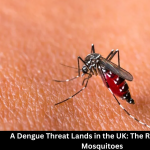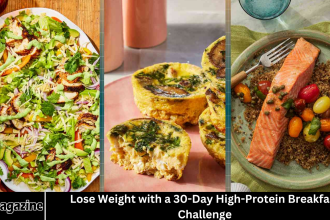For decades, the conversation around food has been fragmented. On one hand, nutritionists advocate for diets that fuel our bodies and prevent disease.
- Understanding the 1%: What Does “Healthy and Sustainable” Actually Mean?
- The Twin Crises: How Our Diets Are Failing Us and the Planet
- The Vicious Cycle: How Health and Sustainability Are Intertwined
- The Road to Solution: What Does the Ideal Plate Look Like?
- Beyond the Individual: The Role of Policy and Industry
- How You Can Be Part of the 1%: Actionable Steps for a Healthier, Greener Plate
- Frequently Asked Question
- What exactly does a “healthy and sustainable diet” include?
- Why is the percentage so low? What’s the biggest barrier?
- Is this diet the same as being vegan or vegetarian?
- If I just focus on eating healthy, isn’t that enough?
- What is the single most impactful change I can make?
- Isn’t sustainable food more expensive? How can I afford it?
- This feels overwhelming. Where should I start?
- Conclusion
On the other, environmentalists sound the alarm about the massive ecological footprint of our food systems. But what if these two issues are inextricably linked?
A landmark study, often cited as a “major report” in leading scientific journals, has delivered a staggering finding: only 1% of the global population consumes a diet that is simultaneously healthy for their bodies and sustainable for the planet.
More Read: UK blogger blamed for influencing daughter’s fatal cancer treatment
Understanding the 1%: What Does “Healthy and Sustainable” Actually Mean?
To grasp the gravity of the 1% figure, we must first define the two core concepts it’s built upon. The report doesn’t use vague definitions; it relies on robust scientific frameworks.
What Constitutes a “Healthy Diet”?
A healthy diet, as defined by global health authorities like the World Health Organization (WHO) and reflected in this study, goes beyond mere calorie intake. It is characterized by:
-
Abundance of Fruits and Vegetables: A minimum of five portions (400 grams) of a variety of fruits and vegetables daily.
-
Whole Grains: Prioritizing whole grains like oats, brown rice, quinoa, and whole-wheat bread over refined grains.
-
Plant-Protein Power: Regular consumption of legumes (lentils, beans, chickpeas), nuts, and seeds.
-
Moderate Animal Proteins: Lean and sustainable sources of fish, poultry, and dairy, consumed in portions that align with health guidelines.
-
Limited Intake of Harmful Elements: Severe restriction of red and processed meats, sugary beverages, refined sugars, and highly processed foods high in salt, unhealthy fats, and additives.
This pattern is closely aligned with well-researched dietary models like the Mediterranean Diet and the Planetary Health Diet.
What Defines a “Sustainable Diet”?
A sustainable diet minimizes its impact on the environment, ensuring that food production can continue for generations to come. Key metrics include:
-
Low Greenhouse Gas (GHG) Emissions: The food system is a major contributor to climate change, primarily through methane from livestock and carbon dioxide from deforestation and transportation.
-
Efficient Land and Water Use: Diets that require less land (preventing habitat destruction) and less freshwater are far more sustainable.
-
Preservation of Biodiversity: Sustainable food production avoids monoculture farming and harmful pesticides that decimate insect and plant life.
-
Minimized Pollution: Limiting fertilizer runoff that creates dead zones in oceans and reducing plastic packaging waste.
The report found that the diets of 99% of the world’s population fail to meet the combined threshold for both health and sustainability, creating a “double burden” of immense scale.
The Twin Crises: How Our Diets Are Failing Us and the Planet
The 1% statistic highlights two parallel emergencies unfolding simultaneously.
The Human Health Crisis
Our current global eating patterns are a primary driver of the non-communicable disease (NCD) pandemic.
-
Rise of Chronic Diseases: Diets high in processed foods, sugar, and unhealthy fats are directly linked to soaring rates of obesity, type 2 diabetes, cardiovascular diseases, and certain cancers.
-
Malnutrition in Two Forms: The world faces a dual problem of overnutrition (leading to obesity) and undernutrition (micronutrient deficiencies). Ironically, these can exist side-by-side, even within the same household.
-
Economic and Social Burden: The healthcare costs associated with diet-related diseases are staggering, placing an enormous strain on economies and healthcare systems worldwide.
The Planetary Health Crisis
The environmental cost of feeding 8 billion people in an unsustainable way is pushing our planetary boundaries to the brink.
-
Climate Change: The global food system is estimated to be responsible for approximately one-third of all human-caused greenhouse gas emissions. Cattle farming is a particularly significant contributor.
-
Deforestation: Vast swathes of rainforest, like the Amazon, are cleared every year for cattle ranching and to grow soy for animal feed, leading to catastrophic loss of carbon sinks and biodiversity.
-
Water Scarcity and Pollution: Agriculture accounts for about 70% of global freshwater use. Meanwhile, fertilizer runoff creates algal blooms and “dead zones” in lakes and oceans.
-
Biodiversity Loss: Industrial agriculture is a leading cause of the dramatic decline in insects, birds, and other wildlife, as their habitats are destroyed.
The Vicious Cycle: How Health and Sustainability Are Intertwined
The most critical insight from the report is that the health and environmental crises are not separate; they form a vicious, self-reinforcing cycle.
-
Unsustainable farming practices degrade soil and reduce the nutrient density of crops.
-
Climate change leads to extreme weather events (droughts, floods) that disrupt food production, causing price volatility and reducing access to nutritious foods, especially for the most vulnerable.
-
This pushes populations toward cheaper, less nutritious, and highly processed foods, which worsens health outcomes.
-
Poor health reduces societal resilience and the capacity to implement sustainable solutions, perpetuating the cycle.
Breaking this cycle requires a fundamental rethinking of what we eat and how it’s produced.
The Road to Solution: What Does the Ideal Plate Look Like?
So, what does the diet of the 1% look like? While there is no single prescription, it closely mirrors the Planetary Health Diet, developed by the EAT-Lancet Commission. This dietary pattern is designed to be flexible and adaptable across cultures.
Imagine your plate:
-
Half the plate is filled with a colorful variety of fruits and vegetables.
-
The other half is split between:
-
Whole Grains: (e.g., brown rice, barley, whole-wheat pasta).
-
Plant Proteins: (e.g., lentils, beans, tofu, chickpeas).
-
Unsaturated Fats: (e.g., from nuts, seeds, olive oil).
-
-
Animal proteins are used sparingly, as a condiment or for occasional consumption, not as the main centerpiece.
This shift towards a plant-forward diet is the single most powerful lever for improving both health and sustainability. It doesn’t necessitate universal veganism but a significant reduction in meat and dairy consumption, particularly in high-income countries.
Beyond the Individual: The Role of Policy and Industry
While individual choices are crucial, the 1% problem cannot be solved by consumer action alone. Systemic change is required.
Governments can:
-
Implement Subsidies: Shift agricultural subsidies away from unsustainable commodities (like corn for animal feed) and towards the production of diverse fruits, vegetables, and legumes.
-
Introduce Labeling: Create clear “planetary health” labels that help consumers make informed choices.
-
Run Public Health Campaigns: Educate citizens on the benefits of healthy, sustainable diets.
-
Regulate Marketing: Restrict the marketing of unhealthy, ultra-processed foods to children.
The Food Industry must:
-
Reformulate Products: Reduce salt, sugar, and unhealthy fats in processed foods.
-
Increase Plant-Based Options: Make healthy, sustainable plant-based products accessible, affordable, and appealing.
-
Increase Transparency: Provide clear information about the environmental footprint of their products.
How You Can Be Part of the 1%: Actionable Steps for a Healthier, Greener Plate
Changing your diet can feel daunting, but progress, not perfection, is the goal. Here are practical steps you can take:
-
Embrace “Meatless Monday” (or Tuesday, or Wednesday): Start by dedicating one day a week to plant-based meals. Explore delicious recipes for lentil soups, bean chilies, or tofu stir-fries.
-
Make Plants the Star: Instead of planning your meal around a piece of meat, build it around a whole grain and vegetables. Add animal protein in small amounts for flavor.
-
Reduce Food Waste: Plan your meals, store food correctly, and use leftovers creatively. Wasted food represents wasted resources and unnecessary emissions.
-
Shop Local and Seasonal (When Possible): This supports local farmers and can reduce the carbon footprint of transportation. Don’t let this become a barrier—eating fruits and vegetables is always better than not, even if they are imported.
-
Read Labels: Be mindful of ultra-processed foods. A short, recognizable ingredient list is usually a good sign.
-
Cook More at Home: Preparing your own meals gives you full control over the ingredients and their proportions.
Frequently Asked Question
What exactly does a “healthy and sustainable diet” include?
A healthy and sustainable diet is a pattern of eating that nourishes your body while minimizing harm to the planet. It is overwhelmingly plant-forward and includes:
- Abundance of Fruits and Vegetables: At least five portions (400g) daily.
- Whole Grains: Like oats, brown rice, and quinoa.
- Plant Proteins: Lentils, beans, chickpeas, nuts, and seeds.
- Moderate, Occasional Animal Proteins: Fish, poultry, and dairy in small amounts, with very limited red and processed meats.
- Minimal Processed Foods: Severe restriction of sugary drinks, refined sugars, and ultra-processed items.
This pattern is closely modeled after the Planetary Health Diet and the Mediterranean Diet.
Why is the percentage so low? What’s the biggest barrier?
The low percentage stems from a combination of factors that create a “vicious cycle”:
- Affordability & Access: In many parts of the world, highly processed foods and certain unhealthy staples are cheaper and more accessible than fresh fruits, vegetables, and lean proteins.
- Cultural & Habitual Norms: In many cultures, meat is a central and celebrated part of the meal, and shifting away from that can be challenging.
- Food Environment: We are constantly marketed to by the food industry, which promotes convenient, tasty, and often unhealthy options.
- Lack of Knowledge: Many people are unaware of the dual impact of their food choices on their health and the planet.
Is this diet the same as being vegan or vegetarian?
Not necessarily. While vegan and vegetarian diets are often more sustainable, the “1%” finding is based on a flexible model. The key is a major reduction in animal products, not their complete elimination. A diet can include small amounts of sustainably sourced fish, poultry, or dairy and still fall within the planetary health boundaries. The primary focus is on making plants the star of your plate.
If I just focus on eating healthy, isn’t that enough?
While eating healthy is a fantastic goal for your personal well-being, the report highlights that it’s often not enough for the planet. For example:
- Some “healthy” foods like out-of-season berries flown long-distance or certain types of resource-intensive fish have a high environmental footprint.
- Conversely, a diet could be relatively low-impact but high in processed foods and low in nutrients, failing the “health” test.
The goal is to find the sweet spot where our food choices support both our own health and the health of our ecosystems.
What is the single most impactful change I can make?
The most significant and evidence-based change you can make is to reduce your consumption of red and processed meat. Livestock production is a leading driver of deforestation, greenhouse gas emissions, and water use. Replacing even a few meat-based meals per week with plant-based proteins like lentils, beans, or tofu has a profound positive effect on both your health (reducing heart disease and cancer risk) and the environment.
Isn’t sustainable food more expensive? How can I afford it?
This is a common concern, but a sustainable diet can be affordable with a strategic approach:
- Prioritize Plants: Plant proteins like lentils, beans, and chickpeas are significantly cheaper than meat per gram of protein.
- Buy in Bulk: Purchasing whole grains (oats, rice) and legumes in bulk reduces cost.
- Embrace Frozen & Canned: Frozen vegetables and canned beans are nutritious, affordable, and reduce food waste. Just check for low sodium in canned goods.
- Cook at Home: Preparing meals from scratch is almost always cheaper and healthier than buying ready-made meals or eating out.
- Reduce Waste: Planning meals and using leftovers saves money that would otherwise be thrown in the trash.
This feels overwhelming. Where should I start?
Start small! You don’t need to overhaul your diet overnight. Here are three simple first steps:
- Try “Meatless Monday”: Dedicate one day a week to exploring delicious plant-based recipes.
- Swap Your Snack: Replace one processed snack a day with a handful of nuts, a piece of fruit, or some veggie sticks.
- Rethink Your Plate: Instead of a large piece of meat with sides, make a vegetable-rich stir-fry, salad, or grain bowl and use a small amount of meat or fish as a garnish for flavor.
Conclusion
The finding that only a meager 1% of people eat both healthy and sustainable foods is not a cause for despair, but a clarion call for collective action. It illuminates a critical flaw in the very foundation of our modern world, but also a tremendous opportunity.
By realigning our food systems and our plates with the principles of health and sustainability, we can address two of the most pressing challenges of our time.
The power to change this statistic lies with all of us—from the choices we make at the grocery store to the policies we advocate for in our communities.
The goal is not to join an exclusive 1% club, but to make that club obsolete, creating a future where a healthy and sustainable diet is the accessible, affordable, and normal choice for everyone.















